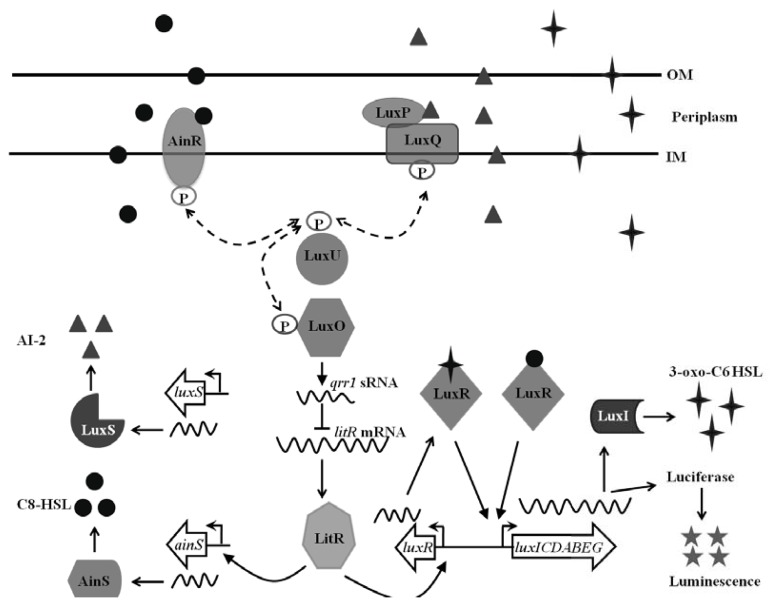Figure 1.
The QS network of V. fischeri. V. fischeri has three QS systems: LuxI-LuxR, AinS-AinR, and LuxS-LuxP/Q. In the absence of C8-HSL and AI-2 autoinducers, LuxO is phosphorylated by the kinase activities of the histidine kinases AinR and LuxQ. Phosphorylated LuxO activates expression of the sRNA Qrr1, which degrades via Hfq the mRNA of litR, thereby reducing the level of the transcription factor LitR. Accumulation of C8-HSL and AI-2 at high cell density results in decreased phosphorylation of LuxO, which enhances the level of LitR. LitR activates transcription of luxR, which encodes the transcription factor that, when bound by the autoinducer 3-oxo-C6-HSL, directly regulates expression of the luminescence (lux) genes. C8-HSL can also affect luminescence by directly binding to LuxR. The LuxR/C8-HSL complex can activate transcription of the lux genes, although less effectively than the LuxR/3-oxo-C6-HSL complex. In addition to encoding the light-producing enzyme luciferase, the lux operon contains luxI, which encodes the synthase LuxI that synthesizes 3-oxo-C6-HSL. As described in the main text, synthesis of both C8-HSL and 3-oxo-C6-HSL is autoregulated by separate positive feedback loops. OM = outer membrane, IM = inner membrane.

